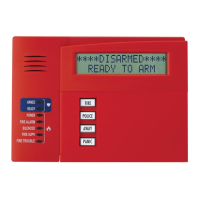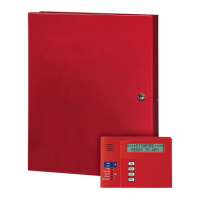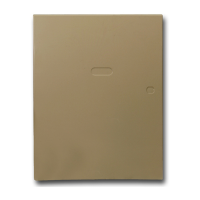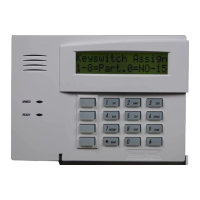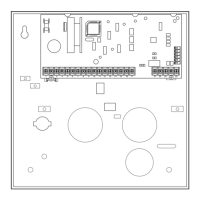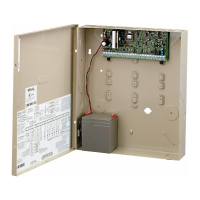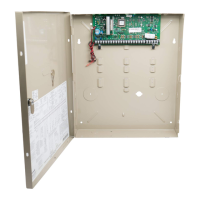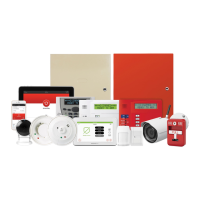
Do you have a question about the Honeywell VISTA-128FBP and is the answer not in the manual?
| Brand | Honeywell |
|---|---|
| Model | VISTA-128FBP |
| Category | Security System |
| Language | English |
Introduction to the Honeywell partitioned security system, its purpose, and components.
Explanation of how a single system can be divided into multiple partitions for different users.
Details on zones, fire, burglary, and CO protection.
Covers alarms, alarm memory, and using schedules for system automation.
Information on device timers, accessing partitions, and master keypad operation.
Instructions for accessing on-screen help for system functions.
Overview of keypad LCD, sounder, and backlight features.
Details on the alphanumeric LCD for user-friendly messages and custom descriptors.
Overview of the keypad layout, important notes, and general operation.
Explains the operation of the numbered keys 1 through 9.
Explains the * READY, #, and 0-9 keys, plus status LEDs.
Explains the purpose and function of installer-programmed exit and entry delays.
Overview of security codes, user numbers, and authority levels.
Details on duress code and quick arming feature.
Details the six different authority levels and their system function capabilities.
Rules governing user code and authority level changes and assignments.
Step-by-step guide to adding a new user to the system with specific prompts.
Instructions for changing an existing user's security code via master/manager access.
Procedure for deleting a user code and associated information from the system.
How to use the GOTO command to access and operate other partitions.
Explanation of the Global Arming option for arming multiple partitions.
Details on master keypad display and how to view partition statuses.
How common lobby partitions affect arming/disarming based on other partitions.
Explains how global vs. non-global codes influence lobby operation.
How to use the * READY key to display faulted zones before arming.
How to display all programmed zone descriptors using the * READY key.
Procedure for individually bypassing specific zones before arming.
Method to bypass all currently open (faulted) zones automatically.
How to view which zones have been previously bypassed when the system is disarmed.
How to bypass a pre-defined group of zones simultaneously.
Instructions for arming the system in STAY mode, protecting the perimeter.
Explains the different STAY modes and their automatic zone bypassing capabilities.
How the system can automatically bypass zones in STAY mode if no one exits.
Instructions for arming in INSTANT mode, offering greater security without entry delay.
Details on INSTANT modes and their automatic zone bypassing features.
How to arm the system in AWAY mode for full perimeter and interior protection.
Instructions for arming in MAXIMUM mode for extended vacant periods.
Procedure for exiting an armed partition without disarming and rearming.
How to disarm the system and silence alarms using the OFF key.
How to clear alarm displays and restore system readiness after an event.
Explanation of keyswitch operation and indicator lights (green/red).
Procedures for arming in AWAY and STAY modes using the keyswitch.
How to disarm the system using the keyswitch, including handling alarm memory.
How to activate or deactivate the chime mode for door/window openings.
How users can view messages from monitoring agencies or installers on the keypad.
Overview of special key combinations for activating emergency functions.
Details on Silent, Audible, and Personal Emergency functions.
How relays can be used for momentary unlocking of doors (e.g., lobbies).
Procedure to activate a relay, typically for unlocking a door for 2 seconds.
How to use #70 command to turn devices (lights) on/off via keypad.
How master/manager users can delay automatic arming time by up to 2 hours.
How to override normal schedules with temporary ones for up to a week.
Step-by-step guide for setting up temporary arm/disarm time windows for each day.
Overview of device timers for controlling lights/appliances based on ON/OFF times and days.
How to initiate random schedules for devices to simulate occupancy.
List of action codes for activating relays and relay groups instantly.
Codes for instant arming/disarming of partitions and specific modes.
Codes for auto-bypassing or unbypassing zones based on time windows.
Codes for enabling partition opening/closing windows and access groups.
Codes for enabling/disabling access points and groups, and activating triggers.
Steps to access and view the system's event log, including display modes and partition selection.
Details on different event log categories like Alarm, Check, Bypass, Open, System, and All.
How to put the system into Test mode to check burglary protection points.
Step-by-step procedure for testing zones, motion detectors, and smoke detectors.
Actions to take when a fire emergency is detected or suspected.
Procedures to silence keypad alarms and clear fire alarm displays.
How the system displays the first zone in alarm or trouble.
Instructions for performing a fire drill test activating notification circuits.
Explains common trouble messages like CHECK, TRBL, SUPV, and their meanings.
What to do when the system displays 'AC LOSS' indicating battery operation.
Recommends contacting a Honeywell dealer for service and provides fields for dealer details.
Steps recommended by NFPA for planning and practicing fire escape routes.
General advice on system maintenance, including testing and battery replacement.
Information on low battery detection and replacement for wireless sensors.
How to silence keypad low battery warning tones.
Tips for cleaning and handling system components to ensure longevity.
How to navigate through fire system events displayed on the keypad.
Procedures for silencing fire alarms and resetting them.
How to check zones, arm the system in various modes.
Procedure for disarming the system and bypassing zones.
Steps for deleting users, controlling output devices, and randomizing times.
Table correlating sounds, causes, and keypad displays for system events.
FCC compliance statement regarding radio frequency energy and interference.
IC compliance statement for digital apparatus and NMB-003 standard.
Statement on device compliance with FCC Rules and IC standards.
Details on FCC Part 68 rules, REN, RJ31X jack, and telephone company interactions.
Information on certified equipment, installation, repairs, and ground connections (English & French).
Discusses potential compromises, failures, and limitations of alarm systems.
Details exceptions to the warranty and limits seller's liability for damages.
